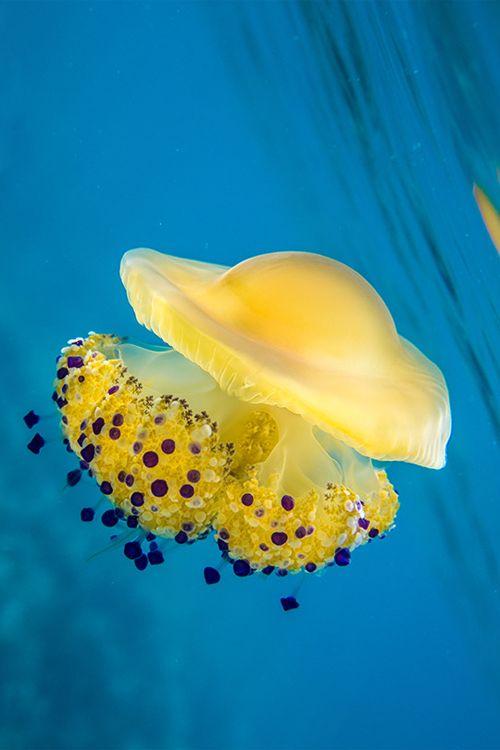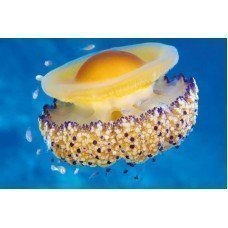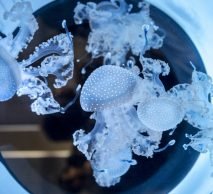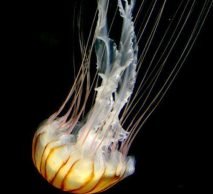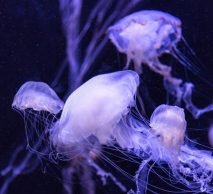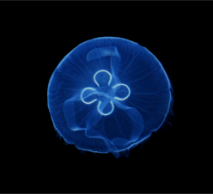Description
Fried egg jellyfish – Cotylorhiza tuberculata
Cotylorhiza tuberculata, also known as the fried egg jellyfish, has its natural habitat in the Mediterranean, mainly in Spain. Normally they live just below the water surface.
Because of the yellow elevation on the screen that looks like a yolk it is obvious why it is called fried egg jellyfish. It belongs to the class of umbrella jellyfish, which are subordinate to the root mouth jellyfish.
Look:
The shade can be up to 35 cm in diameter and is always whitish. There are even specimens that can grow up to 40 cm tall. But this is rather a rarity.
The typical yellow colour is caused by algae that settle on the body and live there.
Reproduction:
Before she dies she secretes planular vans that attach themselves to the ground. These then develop into polyps which, over time, develop into Ephyra larvae. Over time, the larvae turn into medusas and the cycle starts all over again.
Under the umbrella, which resembles a fried egg, there are eight large main arms and several smaller isolated ones below. The white and purple ends of the tentacles look incredible and also provide protection for smaller fish.
Their nettle poison is very weak and therefore harmless to humans. So if you find them in nature, you don’t need to be scared. You can simply enjoy the beauty of the fried egg jellyfish.
Fried egg jellyfish are one of the few jellyfish species that do not need a current to move. It can actually move completely independently. This is otherwise only found in very few jellyfish species.
Our jellyfish are very young to be able to live and grow in your aquarium as long as possible.
This jellyfish species is only suitable for large jellyfish aquariums as they need a lot of space to move around actively.
Facts:
Service life: approx. 6 – 9 months
Food: Artemia, plankton, small fish
Distribution: Mediterranean, Spain
Size: up to 35 cm
Toxic to humans: no
Photosynthetic: no
Water quality:
Water temperature: 20 – 25 °C
pH: 7.9 – 8.4
salt content: 29 – 35ppm
More interesting information about this jellyfish species:
https://de.wikipedia.org/wiki/Spiegeleiqualle
https://www.meerwasser-lexikon.de/tiere/5719_Cotylorhiza_tuberculata.htm
http://www.quallenarten.de/spiegeleiqualle.shtml
Information on jellyfish farming:
Instructions – Jellyfish keeping



